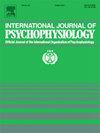绘制心理生理多元宇宙:从理论到推论的透明决策。
摘要
心理生理学研究需要在每个阶段进行选择,从理论和构造定义到任务设计、预处理和统计建模。因为这些选择中的许多都是站得住的,一个单一的研究问题可以产生一系列似是而非的结果,使推理复杂化,透明度和可复制性。本期特刊展示了多元宇宙分析如何系统地评估合理的选择及其对心理生理学结果的影响。多元宇宙分析将数据集视为众多可能结果中的一种,绘制决策如何影响影响估计和随后的推论。这期特刊从四个方面阐述了多元宇宙思维:(1)假设和构造操作化,包括比较相互矛盾的理论解释和不同的心理生理指标;(2)实验设计和任务选择,澄清效应是跨范式的还是依赖于任务情境的;(3)数据处理管道,突出显示哪些预处理步骤会影响数据质量,哪些相对良性;(4)统计模型,检验各分析规范结果的稳定性。总的来说,这些贡献为计划、执行和透明地报告心理生理学中的多元宇宙分析提供了实用指导。这篇特刊的介绍为整合概念和分析的多元宇宙提供了一个路线图,强调原则性的决策制定,明确的替代理由,以及在分析中权衡证据。通过分析,从研究概念出发,采用多元宇宙视角,可以提高理论精度,识别脆弱或稳健效应,调和文献差异,提高可重复性。多元宇宙实践最终可以增强心理生理科学的健壮性、严谨性和可解释性,并支持累积知识的建立。由于心理生理学数据本质上是复杂和多方面的,研究人员在进行心理生理学研究时必须进行广泛的决策。选择出现在每个阶段——从定义任务参数和选择心理生理成分,到确定预处理管道和统计分析。因此,单个研究问题可以通过许多合理的研究设计和分析方法进行测试,每个研究设计和分析方法可能产生不同的结果(Clayson, 2024; Gelman和Loken, 2014)。大量同样站得住脚的选择会让人感到不知所措。这使得评估可复制性的工作变得复杂,并且当研究结果不同时,解释研究结果变得具有挑战性。本期特刊展示了通过使用多元宇宙分析直接解决这些挑战的文章。多元宇宙分析通过系统地检查实验和分析灵活性的影响,为解决心理生理学研究人员面临的无数决策提供了一个强大的框架。多元宇宙分析是指应用一系列合理的分析来研究一种现象(Harder, 2020; Steegen et al., 2016),强调不同的决策如何影响研究结果。多元宇宙方法不是将数据视为产生一个确定的结果,而是认识到原始数据可以导致许多可能的数据集和结果,这取决于分析过程中的选择(Steegen et al., 2016)。通过应用一系列合理的决策,研究人员可以评估其发现的稳健性,确定哪些方法选择会对结果产生有意义的影响,并提高报告的透明度(Harder, 2020; Steegen等人,2016)。鉴于其工作流程中嵌入的决策点的绝对数量,心理生理学研究特别适合于多元宇宙分析(Clayson, 2024)。例如,研究人员必须决定哪种心理生理学方法或反应最能操作他们感兴趣的结构,哪种任务设计最有效地引出该反应,以及如何建立和实现数据处理管道。然后,即使在单一的“最终”数据集中,不同的统计分析决策也可以产生可能结果的“多元宇宙”(credPsychophysiological research requires choices at every stage, from theory and construct definition to task design, preprocessing, and statistical modeling. Because many of these choices are defensible, a single research question can yield a range of plausible results, complicating inference, transparency, and replicability. This special issue showcases how multiverse analyses can systematically evaluate reasonable alternatives and their influence on outcomes in psychophysiology. Multiverse analyses treat datasets as one possible outcome among many, mapping how decisions shape effect estimates and subsequent inferences. This special issue illustrates multiverse thinking across four domains: (1) hypothesis and construct operationalization, including comparisons of contradictory theoretical accounts and alternative psychophysiological indices; (2) experimental design and task selection, clarifying when effects generalize across paradigms versus depend on task context; (3) data processing pipelines, highlighting which preprocessing steps impact data quality and which are comparatively benign; and (4) statistical models, testing the stability of findings across analytic specifications. Collectively, these contributions provide practical guidance for planning, executing, and transparently reporting multiverse analyses in psychophysiology. This introduction to the special issue offers a roadmap for integrating conceptual and analytic multiverses, emphasizing principled decision making, explicit justification of alternatives, and weighting evidence across analyses. Adopting a multiverse perspective from study conception through analysis can strengthen theoretical precision, identify fragile or robust effects, reconcile discrepant literatures, and improve reproducibility. Multiverse practices can ultimately enhance the robustness, rigor, and interpretability of psychophysiological science and support cumulative knowledge building.

 求助内容:
求助内容: 应助结果提醒方式:
应助结果提醒方式:


